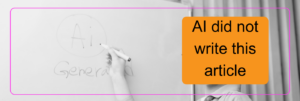How to get the most out of your email marketing
You’ve built a healthy email list, you’ve sent valuable content to your subscribers, and your readers have opened and clicked the email. While the average B2B marketer might consider this campaign completed, we know a great email marketer will take one more step for the best results.
Within the next 72 hours, we recommend spending an hour calling those that opened or clicked your email— what we call a “Power Hour.”
After witnessing partners master this tactic over the past five years, we thought we’d share some tried-and-true do’s and don’ts of Power Hour.
For subscribers who click:
Do
Ring the customers in the next three to four days, and ask them if they received your new email newsletter. Do they have any positive or negative feedback? Inform them that your business is doing a special focus on the email’s topics, and ask if they have any questions.
Here’s what a typical call might sound like:
- Business:
- Hi, is Jane there?
- Jane:
- Yes, Jane here.
- Business:
- We sent out an email newsletter a couple days ago, and we were wondering if you had a chance to read it. Do you have any feedback?
- Jane:
- Yes, I did see it. I really liked it.
- Business:
- Great. Is there anything we can improve, or is there anything you would like to see?
- Jane:
- No, it’s good.
- Business:
- Awesome… We haven’t had the chance to catch up about any potential IT projects you may have. Can we help you with anything?
Don’t
Call the customers who clicked, say you see they clicked on a topic, and ask if they want to purchase a product. This is considered invasive and could lead to customers unsubscribing.
For subscribers who bounced:
A bounce generally occurs when an email address is no longer valid. This often happens when someone leaves an organisation. This is not a negative – it’s actually an excellent opportunity. If your contact at a customer organisation has left that company, you need to know who has replaced that person, especially if he or she is integral to your relationship with that company. So this is a very efficient way of managing your relationships.
Do
Look up the contact’s LinkedIn details to see if he or she moved companies. Alternatively, you can ring the company for more information. If the company asks why you are calling, say you want to ensure the contact is still receiving your thought leadership email marketing. Perhaps the email address you have on file is incorrect?
If you determine the contact did leave the company, ask if you can speak to the new contact. This is the perfect chance to set up a meeting and build a new relationship. Sometimes a new contact can be the key factor in converting a prospect into a customer.
Don’t
Ignore bounces and assume they are invalid. Do some research to maintain strong customer relationships.
*Note: Extu ensures bounces are automatically removed from your list before your next email send. Once you get a new contact’s email address and receive permission to send him or her email marketing, you can upload the new email address into Extu’s Campaign Monitor email platform. If you need help, you can call us and ask for assistance.
For more ways to make the most of bounces, read eMail Bounces: Make it an opportunity.
For subscribers who opt-out:
Contacts opt out (or unsubscribe) by clicking the “unsubscribe” link in the footer of your emails. This means they do not want to receive email marketing from you.
The question you need to consider is: why? It could be they are simply trying to clean up their inbox. On the flip side, it could mean they are considering using a different broker. The only way to know for sure is to ask.
Do
Call customers to find out why they unsubscribed. You might consider looking at your current position with these customers. Has anything changed in your commercial dealings? Do they have a lapsed policy with you? How long since the policy lapsed? Is there a policy approaching renewal shortly? By combining this information, you can then decide how you want to contact the customers, if at all.
Don’t: Contact the unsubscribed customers and have a defensive conversation about why they opted out. Additionally, don’t contact subscribers if you’ve never spoken to them directly, as it could be viewed as an invasion of privacy.
*Note: Extu ensures all unsubscribes are removed from your email list before we send your next email. You can look at your unsubscribes in detail in Extu’s Campaign Monitor email platform.
For other reasons to accept — and even embrace — unsubscribes, read “eMail Unsubscribes: Is It All Bad?”.
For subscribers who fill out contact or survey forms:
These actions demonstrate customers are very engaged with your business and are looking for assistance. Extu will send you immediate email alerts when customers fill out one of these forms.
Do
Contact the customers within 24 hours of receiving this alert. Explain you received a “request assistance report” and are happy to help.
Don’t
Wait more than 72 hours. When customers request assistance, they are at the peak of engagement. You don’t want to miss this opportunity.
For subscribers who click for your phone number:
When customers click on your phone number, it shows a heightened level of engagement, and you will receive an immediate alarm.
Do
If customers do not call you within 24-48 hours, consider contacting them in the next three to four days. Ask if they read your new email. Do they have any feedback? If they say no, ask if they have other IT projects with which they may need assistance.
Don’t: Call the customers, say you can see they clicked on your phone number, and ask if they want to buy something.
…
The best results come from building a healthy email list and providing useful content to your subscribers. Every campaign helps you better understand your customers and their needs.
The key to a successful power hour (and email marketing in general) is to avoid diving straight into a sales question. Provide assistance and value to your customers, and the selling will come naturally. After all, the difference between selling and helping is just two letters.



